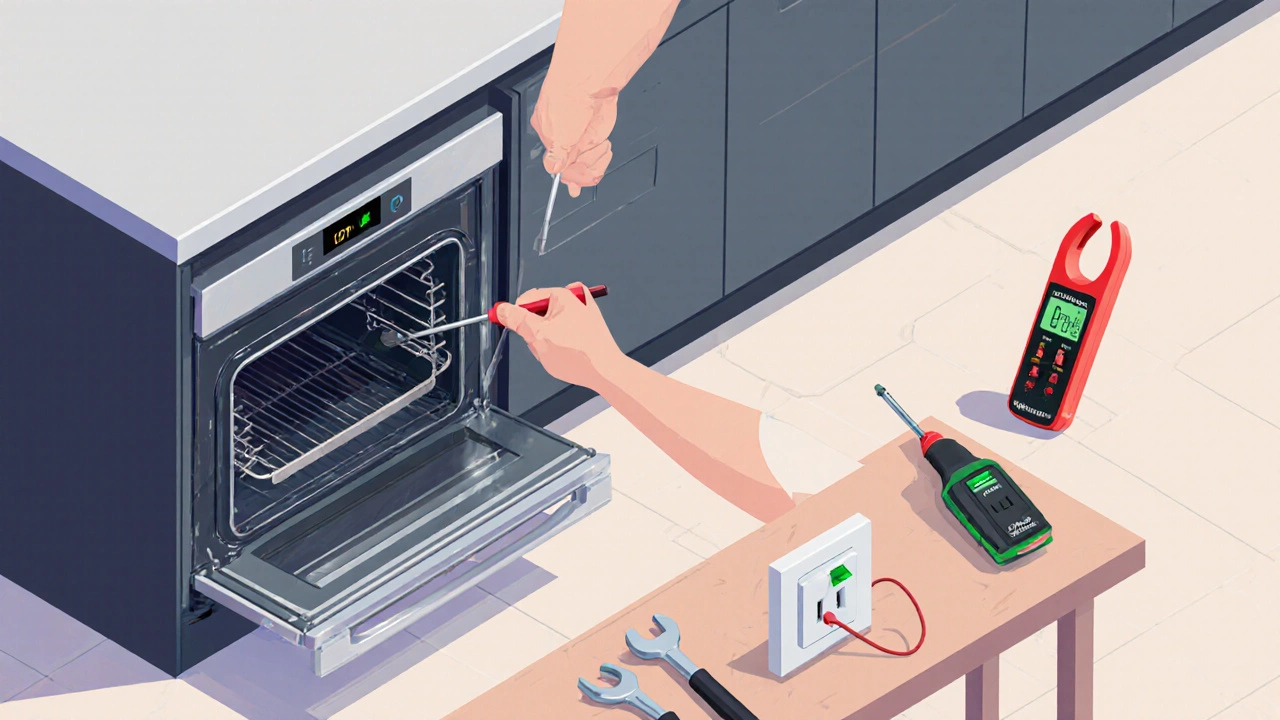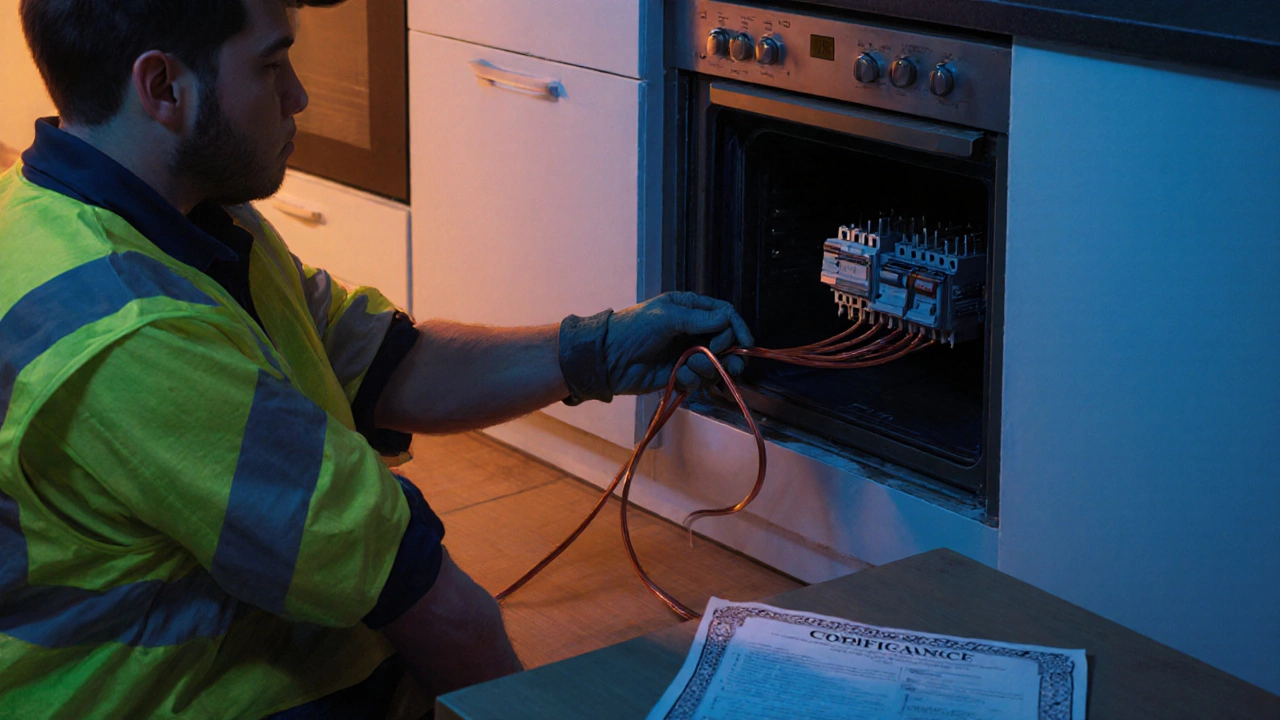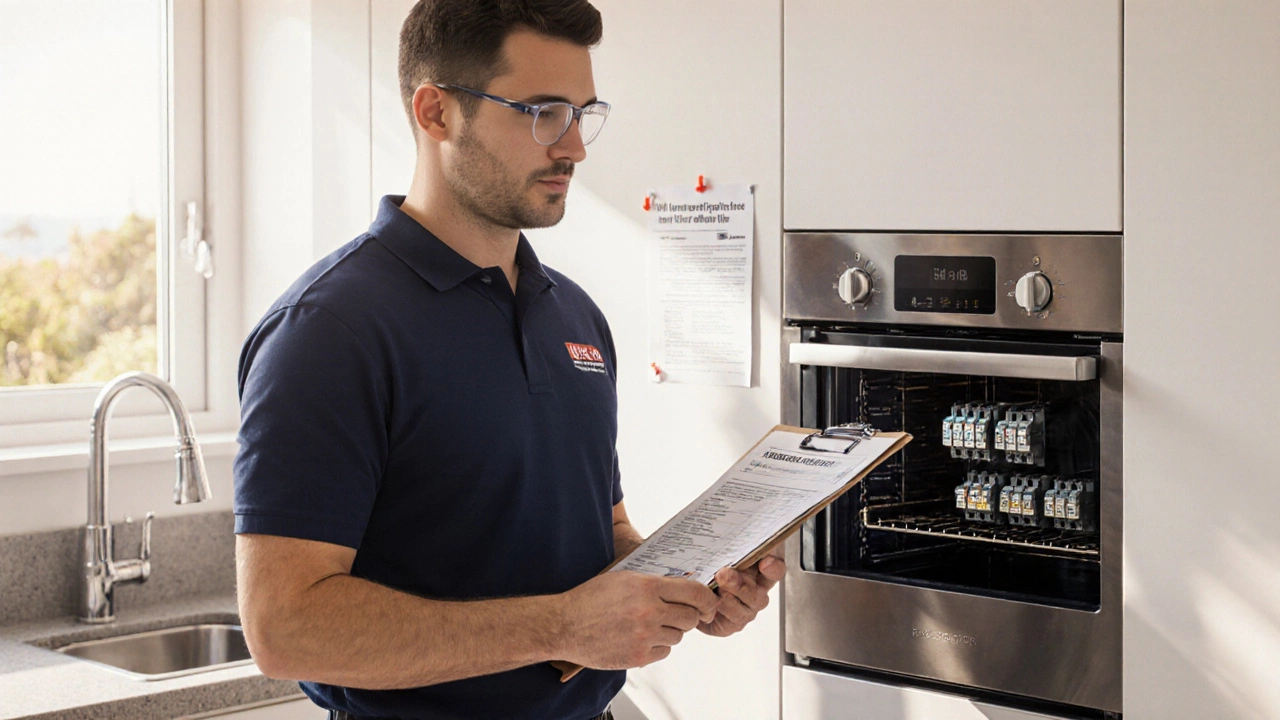Swapping out a dead or outdated electric oven a kitchen appliance that runs on mains electricity and converts electrical energy into heat for cooking can feel like a big leap, especially when you hear the word “electrician” tossed around. Is a licensed tradesperson really required, or can a handy homeowner safely handle the job? This guide walks you through the legal backdrop, the technical checklist, and the point where DIY stops and professional help starts, so you can make an informed decision before you start pulling plugs.
What NewZealand’s wiring rules say about appliance replacements
In NewZealand, the Wiring Rules the national electrical safety standard (AS/NZS 3000:2022) that governs all electrical installations are clear: any work that involves connecting or disconnecting a fixed appliance to the building’s electrical system must be carried out by a licensed electrician. The rule isn’t about skill alone; it’s about ensuring the work meets a documented safety standard and that the appropriate certification is recorded.
If you’re renting, the tenancy agreement usually places the responsibility squarely on the landlord or a qualified tradesperson. Even for owners, the moment you touch the wiring inside the wall, you cross the line defined by the Wiring Rules.
Understanding the oven’s power needs
Before you even think about unplugging anything, you need to know how much power the new oven draws. Look for the nameplate - it lists voltage (typically 230V in NZ), current (ampere rating), and wattage. A standard 70L electric oven might be rated at 2.4kW, which translates to about 10A on a 230V circuit.
Match those numbers against the circuit breaker a protective device that trips when current exceeds its rating. Most kitchens have a dedicated 20A breaker for ovens, but older homes sometimes share a 15A breaker with other appliances, which could cause nuisance trips once the new oven kicks in.
If the existing wiring is undersized (e.g., 1.5mm² cable on a 15A breaker), you’ll need a qualified electrician to upgrade the circuit - another clear sign to call a professional.
DIY feasibility checklist
If the wiring checks out and the oven’s plug matches an existing dedicated socket, you might be able to handle the physical removal and installation. Here’s a step‑by‑step list that most confident homeowners can follow safely:
- Turn off the circuit breaker at the consumer unit to isolate the oven’s power feed. Verify the outlet is dead with a non‑contact voltage tester.
- Disconnect the old oven’s plug or hard‑wired connection. If it’s a plug, simply pull it out; if it’s hard‑wired, note which wires are live (brown), neutral (blue), and earth (green/yellow).
- Remove the oven from its cabinet or countertops. Most units are secured with a few screws and a bracket.
- Position the new oven, ensuring there’s at least 50mm clearance behind it for ventilation.
- Connect the power: If the new oven uses a plug, match the plug type (usually a 3‑pin, 15A plug) to the dedicated socket. For hard‑wired models, reconnect live, neutral, and earth to the corresponding terminals, tightening screws firmly.
- Secure the oven, re‑install any brackets, and double‑check that the cord isn’t pinched.
- Restore power at the breaker and test the oven on a low setting before full use.
Key tools you’ll need: a flat‑head screwdriver, a torque screwdriver (for terminal screws), a voltage tester, and a socket wrench. If any of these steps feel uncertain, that’s the cue to stop and call an electrician.

When to call a licensed electrician
Even with a solid checklist, there are red‑flag scenarios where professional help isn’t just advisable - it’s legally required:
- The oven requires a dedicated circuit a separate wiring run protected by its own breaker because its current draw exceeds the existing circuit’s rating.
- There is no existing dedicated socket, meaning you must run new wiring through the wall.
- The old oven was hard‑wired and you lack confidence identifying live, neutral, and earth conductors.
- The connection point is near a water source (e.g., a kitchen splashback) and you need to ensure proper RCD (Residual Current Device) protection.
- You’re in a rented property and the tenancy agreement forbids DIY electrical work.
In all these cases, a licensed electrician a tradesperson registered with Electrical Workers Registration Board (EWRB) who is authorised to perform electrical work will:
- Assess the existing wiring and load calculations.
- Install a new circuit or upgrade the consumer unit if needed.
- Issue a compliance certificate, which is essential for insurance and resale.
Cost comparison - DIY vs professional
| Aspect | Do‑It‑Yourself | Licensed Electrician |
|---|---|---|
| Typical labour | 0hours (your own time) | 1-2hours (NZ$80-$120 per hour) |
| Materials (plug, wiring) | NZ$20‑$40 | Included in quote |
| Compliance certificate | Not required (risk of insurance issues) | NZ$100‑$150 |
| Total estimated cost | NZ$0‑$80 (excluding oven price) | NZ$300‑$500 |
| Risk factor | Higher - potential for electric shock, fire, or code violation | Low - work inspected and certified |
The numbers above are typical for Auckland suburbs in 2025. If you need a new circuit, the electrician cost can climb to NZ$800‑$1200, especially if the work involves running cable through multiple rooms.

Common pitfalls and safety tips
Even seasoned DIYers stumble when dealing with high‑power appliances. Keep these warnings front‑of‑mind:
- Never work on a live circuit. Always double‑check the breaker is off and verify with a tester.
- Match the plug’s rating to the socket’s rating. A 10A oven on a 15A plug is fine, but a 20A oven on a 15A socket will trip.
- Secure the earth (ground) connection. A missing earth can cause a dangerous fault that bypasses the RCD.
- Leave enough clearance for ventilation - an oven that’s too close to cabinets can overheat and become a fire hazard.
- Document any changes. Take photos of the wiring layout before you disconnect; you’ll thank yourself if something needs to be restored later.
When in doubt, reach out to a qualified electrician. The cost of a professional call is tiny compared with the potential expense of a fire or a failed inspection.
Frequently Asked Questions
Do I need an electrician if my oven uses a standard 3‑pin plug?
If the oven simply plugs into an existing dedicated 15A socket and the circuit’s breaker matches the oven’s current draw, you can replace it yourself. However, you must still turn off the breaker, verify the outlet is dead, and ensure the plug’s rating matches the circuit. If any wiring behind the socket looks damaged or the socket isn’t dedicated, call an electrician.
What is a compliance certificate and why do I need one?
A compliance certificate is an official document from a licensed electrician confirming that the electrical work meets the NewZealand Wiring Rules. It’s required for insurance, resale, and sometimes for council building consent. DIY work that isn’t certified can invalidate your home insurance if a fault leads to damage.
Can I use a multi‑plug adaptor to connect a new oven?
No. Multi‑plug adaptors are designed for low‑power devices. An oven draws several kilowatts, far beyond what an adaptor can safely handle. Using one creates a high risk of overheating and fire. Install a dedicated socket or hard‑wire the oven instead.
My kitchen has an old 10A breaker. My new oven requires 20A. What should I do?
Upgrade the circuit. A qualified electrician will replace the 10A breaker with a 20A one and may need to upsize the wiring to at least 2.5mm² copper. This ensures the oven runs without nuisance trips and stays within safety standards.
Is it okay to leave the oven’s power cord loose in the cabinet?
No. The cord should be firmly secured and protected from sharp edges. A loose cord can be damaged or cause a short circuit. Use the manufacturer’s mounting brackets or cable clips to keep it tidy.


